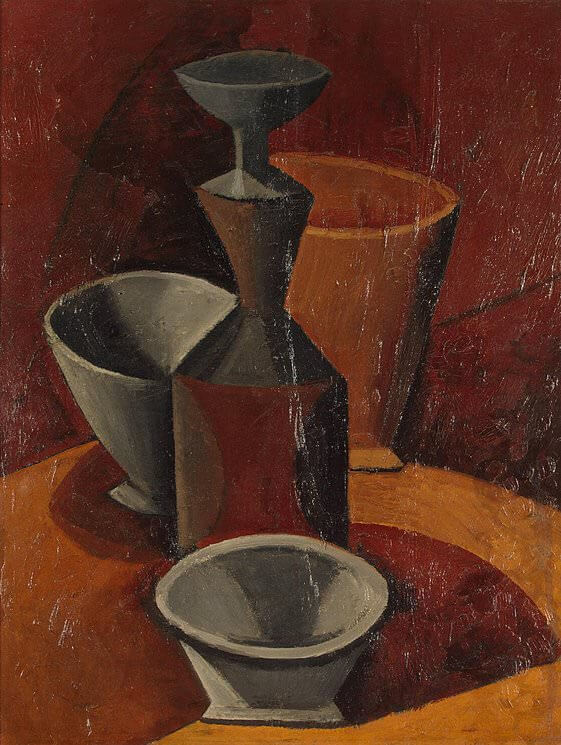Carafe and Three Bowls, 1908 by Pablo Picasso

In 1908 Picasso produced a series of small still lifes. These were probably inspired by spatially complex still lifes of Paul Cezanne, especially Still Life with Basket of Apples, Rideau, Cruchon et Compotier, which Picasso had seen the previous year.
Carafe and Three Bowls represents a modest assortment of still-life objects arranged, apparently randomly, on a small table. However, Picasso's principal concern seems to be the representation of space itself. Rather than being placed horizontally and next to each other, these objects notably overlap in depth, each placed behind the next object in sequence. This should create a sense of significant depth. However, Picasso compresses the space by tilting the table surface towards the spectator. The foreground bowl also refutes spatial logic, as its base is represented as if seen straight on, parallel to the picture plane, while its elliptical upper surface suggests a high viewpoint. The lighting is inconsistent, with shadows falling in two different directions, and the background space looks as solid as the foreground objects. This overall effect of spatial compression and inconsistency would be further deployed in Picasso's Cubist still-life paintings,
















